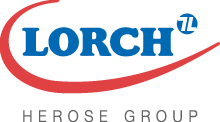

We combine our strengths and our know-how and set new standards in the industrial safety valve sector.
The company LORCH Sicherheitsventile GmbH & Co. KG has been part of the HEROSE Group since 2013. The subsidiary's focus has always been on the production and sale of industrial safety valves. In order to be able to support the team more optimally, sales were bundled under the umbrella of the HEROSE Group at the beginning of 2022. This meant that industrial customers could now be looked after more quickly and, above all, from with one contact person for our customers.
However, in order to further optimize know-how and processes, the two companies moved even closer together. Since the two product programs offered some good complements to each other, they have now been combined into one. By joining forces, the extensive experience was used to design new, optimized safety valve series and ultimately strengthen the product portfolio and position on the market.
The decision to take this step is part of the growth strategy in the HEROSE Group's industrial safety valves area. In addition to the products themselves, the production area was also optimized in order to be able to produce larger quantities better in the future and to be able to supply both LORCH and HEROSE customers with the new HEROSE product portfolio. The consolidated HEROSE products combine the experiences and strengths of both traditional companies.
HEROSE GMBH | Armaturen und Metalle
Phone: +49 4531 509 0
Fax: +49 4531 509 120
info@herose.com
LORCH
Sicherheitsventile GMBH & Co. KG
Echterdinger Strasse 57
70794 Filderstadt - Bernhausen
Germany
Phone: +49 711 227 20 400
Fax: +49 711 227 20 488
lorch@lorch.de
© HEROSE GMBH